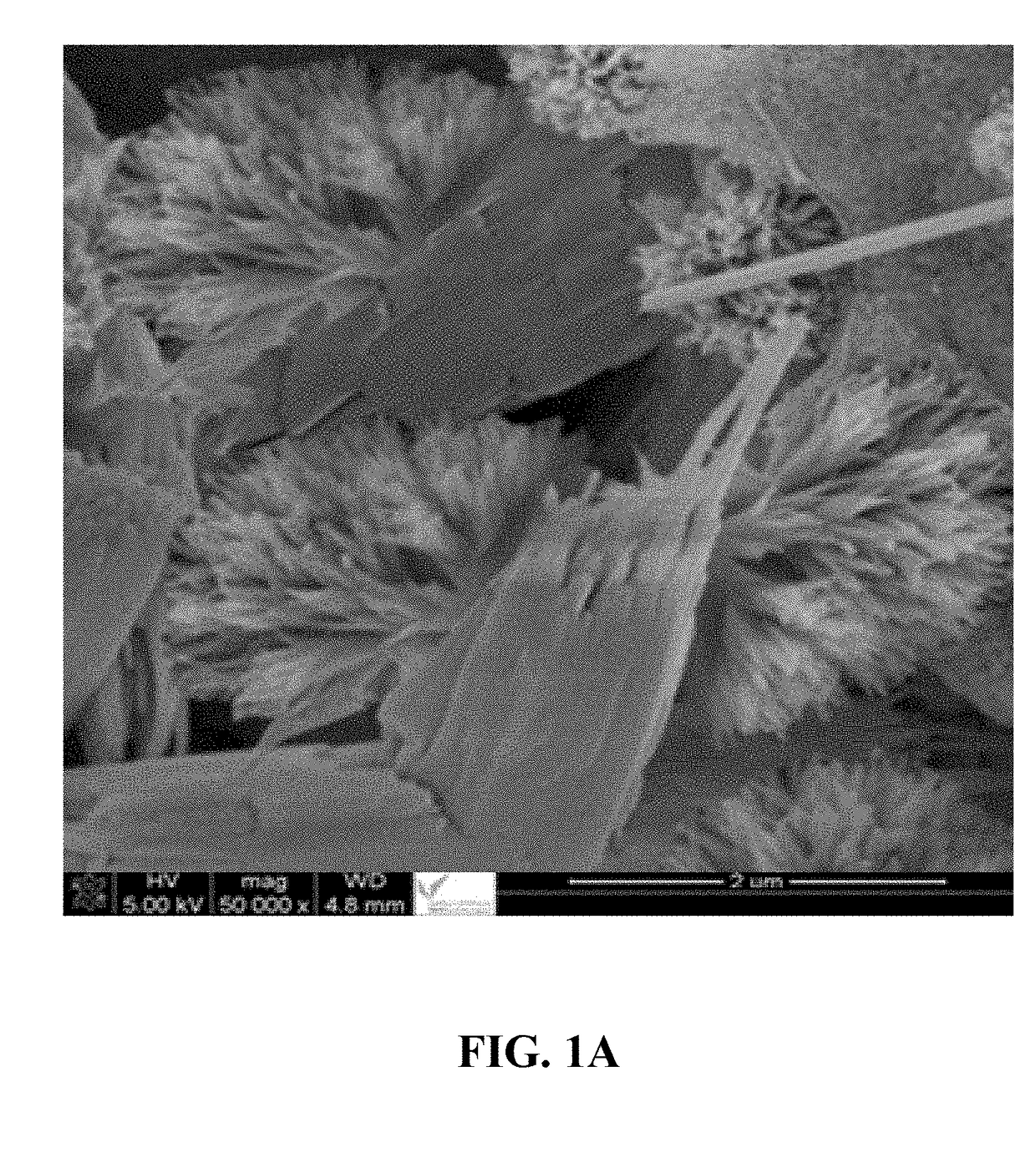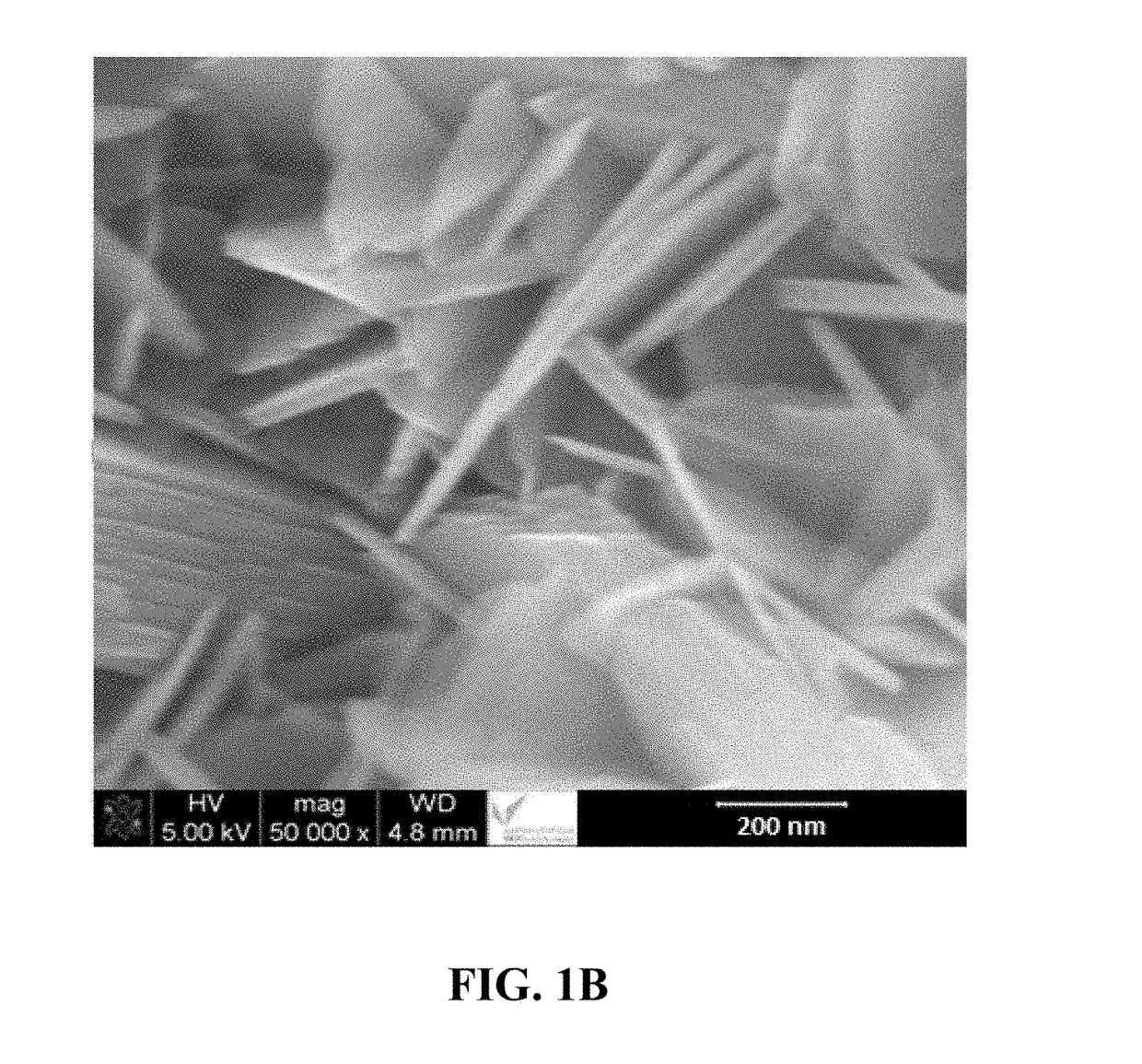AZO DYE INTERCALATED Fe(II)/Fe(III) LAYERED DOUBLE HYDROXIDE FOR WATER PURIFICATION
- Summary
- Abstract
- Description
- Claims
- Application Information
AI Technical Summary
Benefits of technology
Problems solved by technology
Method used
Image
Examples
example 1
[0110]Preparation of a Nanostructured Material Comprising Fe(II) / Fe(III) Double Hydroxide Layers in a Coral Reef Morphology and having a Plurality of Nanoflake Walls
[0111]In a conical flask, 0.75 mmol of ferrous acetylacetonate and 0.25 mmol of ferric acetylacetonate were dissolved in 30 mL of 2,2′-(octadec-9-enylimino)bisethanol solution (also known as N-oleyl diethanolamide) and stirred for 30 minutes at 45° C. In a separate conical flask, a solution of 3-hydroxy-4-(2-hydroxy-4-sulfo-1-naphthylazo)-2-naphthalenecarboxylic acid (also known as calconcarboxylic acid) was prepared by dissolving 0.1 g of it into a 20 mL acetone solution having an acetone:water volume ratio of 1:1. This calconcarboxylic acid solution was added to the Fe(II) / Fe(III) solution and stirred for 15 minutes at 45° C. A 0.5 mM trimethylamine N-oxide solution was added dropwise to reach a pH of 10. The solution was poured into a 80 mL Teflon-lined autoclave and heated in a microwave oven (Sineo-Uwav-1000M) at a ...
example 2
Adsorption of Antibiotic Drugs in Tap Water by the Nanostructured Material.
[0112]To determine how well the nanostructured material removes contaminants from tap water, its adsorption of pharmaceutical compounds was tested with solutions of the antibiotic drugs erythromycin, oxacillin, ofloxacin, amoxicillin, ampicillin, ciprofloxacin, and sulfamethoxazole. In each experiment 1000 mg / L of an antibiotic drug was dispersed in tap water. The tap water was used in order to simulate a real situation and was previously analyzed for pollutants. The initial solution conductivity was 775 mS / cm, and the pH was 7. A 1 mg of the nanostructured material was added to 1 L of the antibiotic drug solution. UV-visible absorption spectra of the antibiotic drug solution were measured by a spectrophotometer (JASCO-V-750) in the wavelength range λ=200−600 nm, before treatment and at various interval times. A plot showing the decreases in these antibiotic drug concentrations is shown in FIG. 3.
example 3
Adsorption of Hormone Drugs in Tap Water by the Nanostructured Material.
[0113]The process of adsorbing hormone drugs from tap water was carried out under the same conditions as Example 2, except that the hormone drugs 17-β estradiol, estriol, estrone, and mestranol were used instead of antibiotic drugs. A plot showing the decreases in these hormone drug concentrations is shown in FIG. 4.
PUM
| Property | Measurement | Unit |
|---|---|---|
| Temperature | aaaaa | aaaaa |
| Molar density | aaaaa | aaaaa |
| Density | aaaaa | aaaaa |
Abstract
Description
Claims
Application Information
 Login to View More
Login to View More - R&D
- Intellectual Property
- Life Sciences
- Materials
- Tech Scout
- Unparalleled Data Quality
- Higher Quality Content
- 60% Fewer Hallucinations
Browse by: Latest US Patents, China's latest patents, Technical Efficacy Thesaurus, Application Domain, Technology Topic, Popular Technical Reports.
© 2025 PatSnap. All rights reserved.Legal|Privacy policy|Modern Slavery Act Transparency Statement|Sitemap|About US| Contact US: help@patsnap.com



